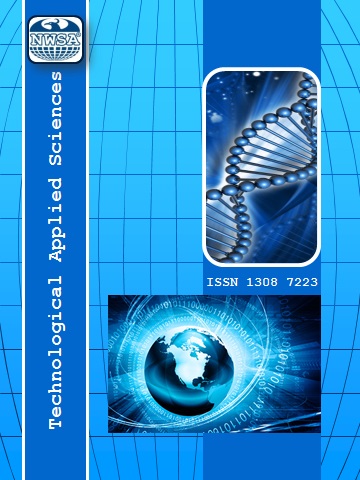References
[1] Mutlu, İ., (2002). Seramik katkılı asbestsiz otomotiv fren balatası üretimi ve frenleme karakteristiğinin deneysel olarak incelenmesi (Doktora Tezi). Sakarya: Sakarya Üniversitesi Fen Bilimleri Enstitüsü.
[2] Paustenbach, D.J., Finley, B.L., Lu, E.T., Brorby G.P., and Sheehan, P.J., (2004). Environmental and occupational health hazards associated with the presence of asbestos in brake linings and pads (1900 to present): a state of-the-art review. Jurnal of Toxicology and Environmental Health, Part B, 33110.
[3] Morshed, M.M. and Haseeb, A.S.M.A., (2004). Physical and chemical characteristics of commercially available brake shoe lining materials: a comparative study. Journal of Materials Processing Technology, 155156:14221427.
[4] Yılmaz, F., (1997). Sürtünme ve aşınma. 9. Ulusal Metalurji ve Malzeme Kongresi, İstanbul-Türkiye, 229247.
[5] Rohatgi, P.K., Liu, Y., and Ray, S., (2002). Friction and wear of metal-matrix composites. CRC Press LLC., ASM Handbook, Vol:18.
[6] Staab, G.H., (1999). Laminar composites. Butterworth-Heinemann, Chapter 1.
[7] Özakça, M., (1989). Mechanical Properties of Compacted and Sintered Powder Metallurgy Blanks (Yüksek Lisans Tezi). Gaziantep: Gaziantep Üniversitesi Fen Bilimleri Enstitüsü.
[8] Idris, U.D., Aigbodion, V.S., Abubakar, I.S., and Nwoye, C.I., (2013). Ecofriendly asbestos free brake-pad:Using banana peels. Journal of King Saud UniversityEngineering Sciences, 27(2):185-192.
[9] Lu, Y., (2006). A combinatorial approach for automotive friction materials: Effects of ingredients on friction performance. Composites Science and Technology, 66:591-598.
[10] Jang, H., Ko, K., Kim, S.J., Basch, R.H., and Fash, J.W., (2004). The Effect of Metal Fibers on The Friction Performance of Automotive Brake Friction Materials. Wear, 256(3-4):406-414.
[11] Jaafar, T.R., Selamat, M.S., and Kasiran, R., (2012). Selection of Best Formulation for Semi-Metallic Brake Friction Materials Development, in: K. Kondoh (Ed.) Powder Metallurgy, pp:30.
[12] Zaharudin, A., Talib, R., Berhan, M., Budin, S., and Aziurah, M., (2012). Taguchi method for optimising the manufacturing parameters of friction materials. International Journal of Mechanical and Materials Engineering, 7(1):83-88.
[13] Wang, L., Pan, Q.R., Zhu, S., and Wu, S.Z., (2017). Fabrication of copper-based powder metallurgy brake pad for high speed train and its friction and wear property. Master of Mechanical Engineering, 41(6):5558.
[14] Yıldırım, S.T., (2002). Fiber reinforced concrete investigation performance characteristics (Unpublished PhD Thesis). Elazığ: Fırat University Institute of Science and Technology.
 +90(535) 849 84 68
+90(535) 849 84 68 nwsa.akademi@hotmail.com
nwsa.akademi@hotmail.com Fırat Akademi Samsun-Türkiye
Fırat Akademi Samsun-Türkiye
